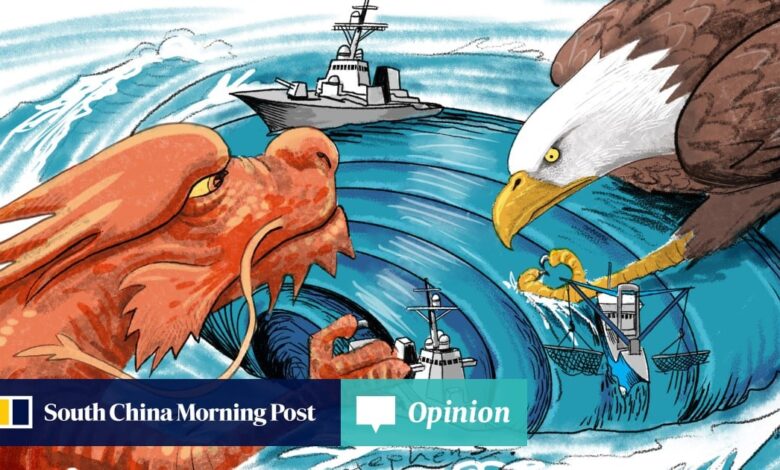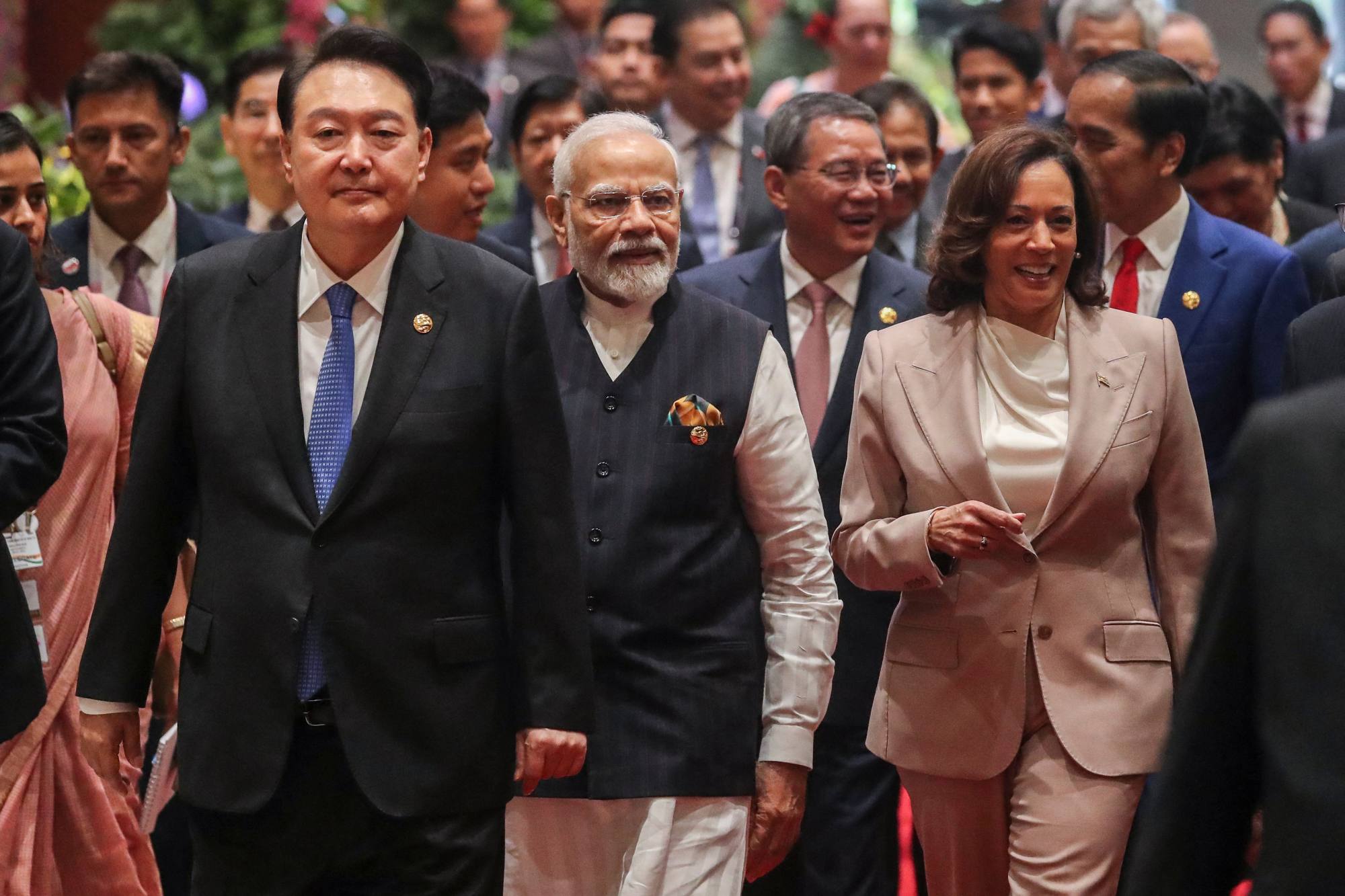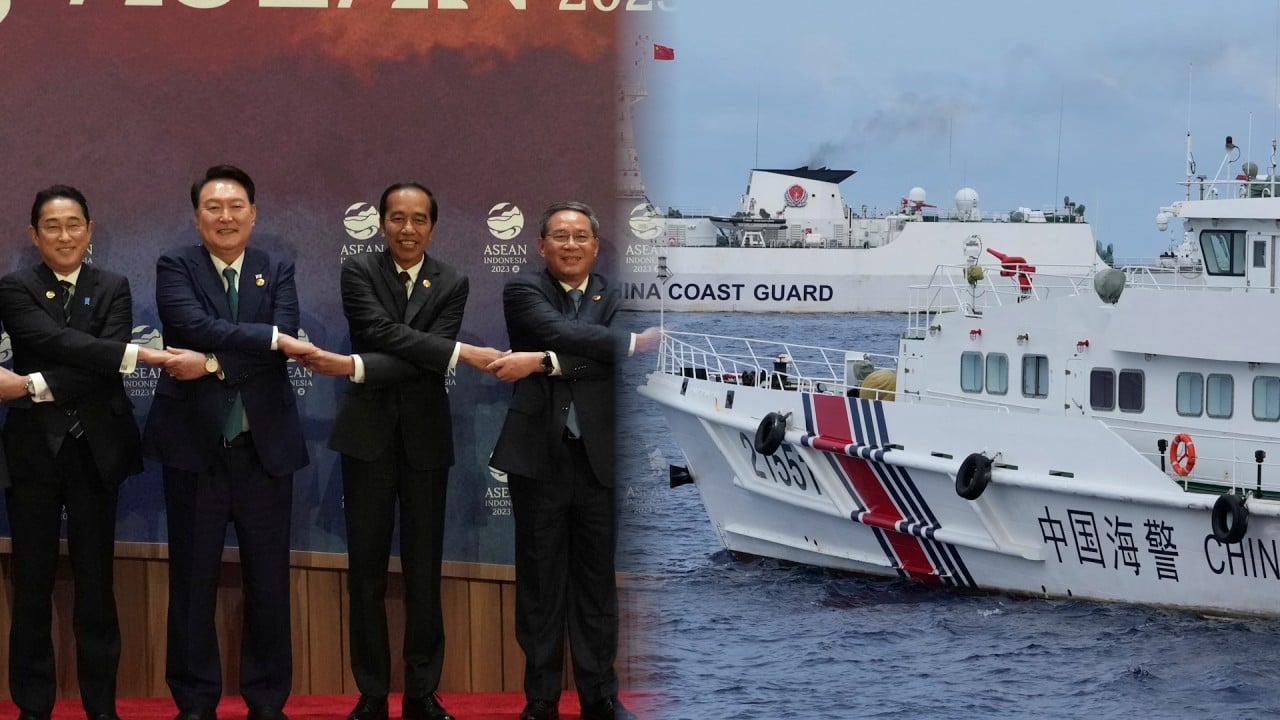Opinion: South China Sea: US-China confrontation looms large

[ad_1]
While members of the Association of Southeast Asian Nations may still have some agency if they can find a clear common voice, the South China Sea issues are mainly driven by the race between China and the United States for hegemony in the region.
At the East Asia Summit that week, President Joko Widodo of host nation Indonesia appealed to participants – including China, the US and other non-Asean interlocutors – to ease tensions. “Everyone in this room has the same responsibility to not create new conflict, to not create new tension, to not create new wars,” he said. “At the same time, we have the responsibility to lower heated tensions, to thaw frozen state of affairs, to create room for dialogue, to bridge existing differences.”

The Chinese coastguard’s action was particularly dangerous because the Philippines’ military ally, the United States, has vowed to defend Philippine troops and public vessels if they are attacked in the South China Sea.
Early this month, a US surveillance plane monitored another of the Philippines’ resupply missions to the disputed shoal, as Chinese coastguard and maritime militia ships surrounded Philippine vessels.
The plane declared over the radio: “This is a US Navy aircraft in the vicinity of Second Thomas Shoal observing all activities between Filipino and PRC coastguard vessels to include … any unsafe or unprofessional actions.” However, this did not deter aggressive action by the Chinese vessels.
Stop pushing the lie that Beijing is on the brink of war with Taiwan
Stop pushing the lie that Beijing is on the brink of war with Taiwan
These developments come against a backdrop of continued US intelligence probes in China’s near waters as well as its freedom of navigation operations challenging China’s claims in the sea.
US Secretary of Defence Lloyd Austin admitted as much in June, when he told the Shangri-La Dialogue that the US and its allies would not be deterred by China’s “alarming number of risky intercepts of US and allied aircraft flying lawfully in international airspace”. In an indication of the degree of its displeasure, China then rebuffed the US’ attempt to restart communication between their militaries.
Thus, it should have been no surprise when the meetings made little progress; Asean is still a long way from agreeing a robust, legally binding South China Sea code of conduct.
When one throws into the mix the relatively unpredictable behaviour of US allies like the Philippines, confrontation between the US and China appears ever more likely. Both should tread carefully around potential hotspots such as the Second Thomas Shoal, Scarborough Shoal and Taiwan. But unless the two can agree to disagree and practise military restraint, something could go seriously wrong.
Mark J. Valencia is a non-resident senior research fellow at the Huayang Institute for Maritime Cooperation and Ocean Governance
[ad_2]
Source link


